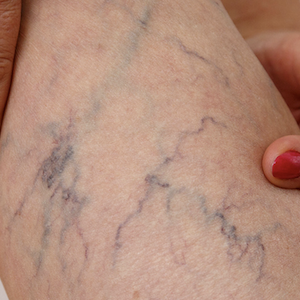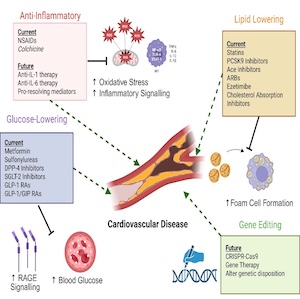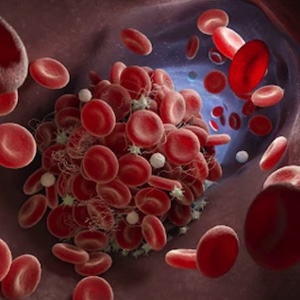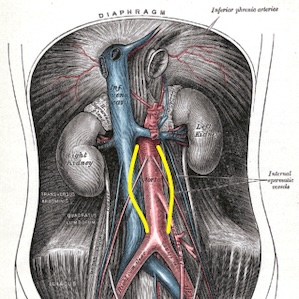Narrative Reviews
Vol. 1 No. 1 (2022)
New perspectives for prevention of the post-thrombotic syndrome

Publisher's note
All claims expressed in this article are solely those of the authors and do not necessarily represent those of their affiliated organizations, or those of the publisher, the editors and the reviewers. Any product that may be evaluated in this article or claim that may be made by its manufacturer is not guaranteed or endorsed by the publisher.
All claims expressed in this article are solely those of the authors and do not necessarily represent those of their affiliated organizations, or those of the publisher, the editors and the reviewers. Any product that may be evaluated in this article or claim that may be made by its manufacturer is not guaranteed or endorsed by the publisher.
Received: 10 February 2022
Accepted: 8 March 2022
Accepted: 8 March 2022
1526
Views
471
Downloads
Similar Articles
- Daniela Poli, Walter Ageno, Emilia Antonucci, Salvatore Bradamante, Eugenio Bucherini, Paolo Chiarugi, Antonio Chistolini, Benilde Cosmi, Anna Falanga, Antonio Insana, Domenico Lione, Rosa Maria Lombardi, Giuseppe Malcangi, Rossella Marcucci, Giuliana Martini, Lucilla Masciocco, Carmelo Paparo, Daniele Pastori, Simona Pedrini, Vittorio Pengo, Pasquale Pignatelli, Andrea Toma, Sophie Testa, Gualtiero Palareti, Management of anticoagulation in atrial fibrillation patients in Italy: insight from the Atrial Fibrillation-Survey on Anticoagulated Patients Register (AF-START) , Bleeding, Thrombosis and Vascular Biology: Vol. 2 No. 2 (2023)
- Matteo Guarascio, Gerardo Nicola Pititto, Alessia Abenante, Marco Paolo Donadini, Distal deep vein thrombosis: is there a way out of this dark forest? , Bleeding, Thrombosis and Vascular Biology: Vol. 3 No. 2 (2024)
- Gisoo Imani, Aaron Wilson, Sara Vazquez, Daniel M. Witt, Pathways for lower extremity superficial vein thrombosis management in an academic medical center , Bleeding, Thrombosis and Vascular Biology: Vol. 4 No. 1 (2025)
- Francesco Marongiu, Elvira Grandone, Silvia Marongiu, Antonella Mameli, Doris Barcellona, Stroke in women: anticoagulation in a complicated puzzle , Bleeding, Thrombosis and Vascular Biology: Vol. 3 No. 2 (2024)
- Paolo Prandoni, Franca Bilora, Raffaele Pesavento, Giorgina Salgueiro, Angeles Blanco-Molina, Raquel Lòpez-Reyes, Manuel Monreal, and the RIETE Investigators, Treatment of venous thromboembolism in pregnancy: findings from the RIETE Registry , Bleeding, Thrombosis and Vascular Biology: Vol. 1 No. 2 (2022)
- Mattia Galli, C. Michael Gibson, Dominick J. Angiolillo, Factor XI inhibitors in adjunct to antiplatelet therapy: the ultimate dual-pathway inhibition? , Bleeding, Thrombosis and Vascular Biology: Vol. 2 No. 3 (2023)
- Sarah Gallitto, Thomas C. Varkey, Jacob Lahti, Venous thromboembolism prophylaxis in orthopedic surgery: a narrative review , Bleeding, Thrombosis and Vascular Biology: Vol. 3 No. 3 (2024)
- Marcello Di Nisio, Matteo Candeloro, Nicola Potere, Ettore Porreca, Jeffrey I. Weitz, Factor XI inhibitors: a new option for the prevention and treatment of cancer-associated thrombosis , Bleeding, Thrombosis and Vascular Biology: Vol. 3 No. s1 (2024)
- Gianfranco De Girolamo, Luca Sarti, Sonia Cecoli, Karin Bonora, Chiara Ajolfi, Francesco Bellelli, Valeria Coluccio, Gualtiero Palareti, Marco Marietta, Safety and efficacy of treatment with vitamin K antagonists in patients managed in a network of anticoagulation services or as routine general care , Bleeding, Thrombosis and Vascular Biology: Vol. 1 No. 1 (2022)
- Cristina Legnani, Michela Cini, Sophie Testa, Alberto Tosetto, Claudia Dellanoce, Stefania Bellesso, Giuseppe Carli, Ilaria Nichele, Laura Lissandrini, Serena Zorzi, Emilia Antonucci, Gualtiero Palareti, Evaluation of Coaguchek® Pro II coagulation testing device performance to assess direct oral anticoagulant action. The DOAC-CHECK study , Bleeding, Thrombosis and Vascular Biology: Vol. 1 No. 3 (2022)
1-10 of 100
Next
You may also start an advanced similarity search for this article.














